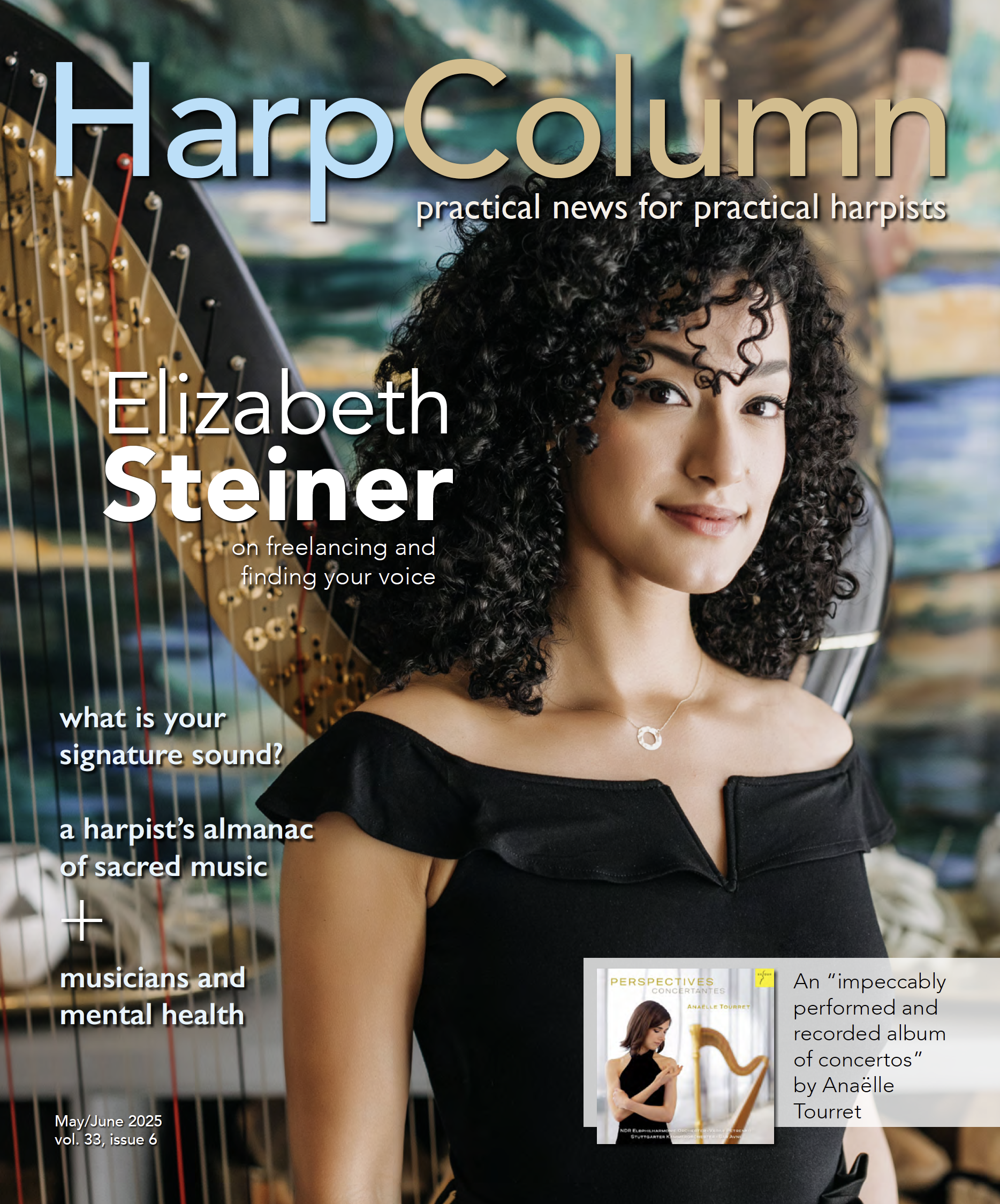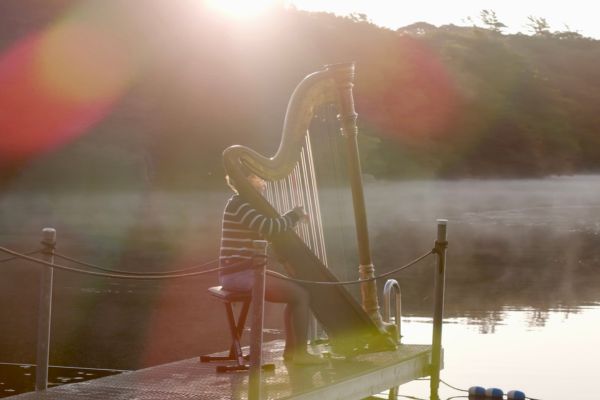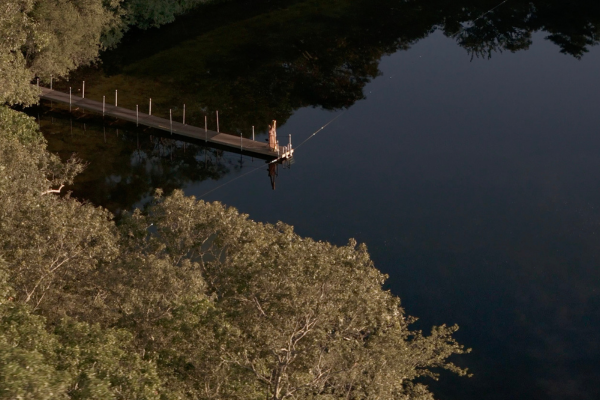Filming a music video is complicated. Filming a music video outdoors at sunrise with a harp is, well, extremely complicated.
This summer, I collaborated with my brother who is a videographer, to record a music video of Ólafur Arnald’s piece “saman” on the harp. It’s a beautiful, reflective two-minute piece originally written for solo piano. I thought it could be magical to film my rendition on a secluded pond near my parents’ home on Martha’s Vineyard during sunrise. Most of the music videos I had filmed up until this one had been in a studio or concert setting, so there was a bit of a learning curve. There are many more variables to consider when filming outdoors, but if you get it right, the payoff is worth it.
The most important thing to consider when filming outside is sunlight. Since we wanted to capture everything during sunrise, we had a limited window of time we could film. Therefore, we went to the pond the day before to finalize the storyline and all of the shots we wanted. Not only did we keep an eye on the weather, but we also had to calculate the direction of the sunlight and where the shadow would fall on the harp and my face while playing. This determined the angle of how we set up the harp. On our first attempt at filming, the sky was gray and overcast, so we scrapped all of the footage. On our second attempt, we got lucky—the entire pond was cloaked in a foot of mist, and the sky was completely clear. It felt eerily beautiful. By the middle of filming, sunlight began to pour in, and we got some incredible sun glare footage.
For the video, we decided to use a combination of three types of shots: aerial footage with a DJI drone, close-ups of my hands playing with a DJI Osmo, and underwater shots of me swimming with a GoPro. Originally, we thought we would film the swimming and harp playing on separate days, but we quickly realized we had to film it all on one day to maintain consistency throughout the footage.
There are two options when recording the audio for a music video: live playing or playing along to pre-recorded audio (like “lip syncing”). Since we were filming outside on a pond, it would have been almost impossible to capture a clean, professional-quality live recording. Therefore, it made the most sense to play along to pre-recorded audio. However, due to various factors, I did not have a chance to record in the studio before we filmed. I decided the easiest way to ensure that my fingers would sync up with the future recording was to record a “scratch recording” on my phone and play along to it while we filmed. I must have played the song 40 times while my brother filmed, because we wanted to have plenty of options in the editing process.
Once we finished filming, I recorded the final audio in a professional recording studio. I originally recorded with a click-track (an audio beat track used to synchronize sound recordings) because I was concerned that the audio would not line up with my hands in the video, but I wasn’t happy with how it sounded. The click-track interfered with the expression. It felt too metronomic. So I asked the audio engineer to play one bar of a click-track to give me the tempo and then to mute. Luckily, I played fairly consistently so each take was almost exactly the same length as the scratch recording reference. I was not happy, however, with the quality of the recording. It lacked a full, resonant sound. I ultimately decided to redo the recording at a different studio with an engineer who had more experience recording acoustic and classical instruments. This made all the difference. The engineer also ran the recorded harp through a chrystalliser effect plug-in (imagine harmonics and overtones on steroids), which he then laid underneath the recording. This created a layer of harmony that filled out the whole sound.
Once I was happy with the final recording, my brother and I worked together to edit the film. This was the most laborious part of the process. We had to comb through hours of footage and consider both issues of audio syncing and technical matters (like unsteady camera movement and bad lighting), while trying to create an artistic narrative. Some of the aerial shots were far away enough that syncing was irrelevant, so that gave us a lot of flexibility. Other shots were close enough that syncing was crucial, so we prioritized those and worked around them. In hindsight, it would have been easier to record the audio before filming, but I may not have considered adding the crystallizer effect, which ended up being one of my favorite additions to the project.
I hope my experience encourages any harpist considering filming their next video project outdoors. It’s worth the extra effort. I hope you enjoy the video! •








